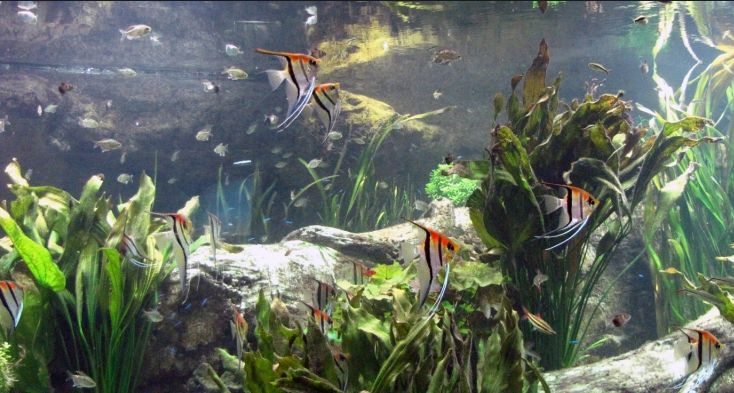
If one has fish in the aquarium during cycling the tank, this is called “fish-in cycling”. I don’t recommend fish-in cycling. There is simply no reason to do it. The only benefit is that doing it in its simplest form is very easy (doing it in its more complicated form is very difficult). But often one has no choice but to do fish-in cycling.
Reasons not to do fish-in cycling:
- It typically takes longer than other methods
- There is a small chance of damaging or even killing the fish put in the aquarium, especially for a beginner who overstocks and/or overfeeds their fish.
- Normally the water isn’t crystal clear at the end of the cycling.
- You cannot add much fish at the end of the cycling as it doesn’t produce a lot of beneficial bacteria.
- The fish will not have an established filter. Established filters have been proven to prevent fatal ich outbreaks. So doing a fish-in cycle significantly increases the risk of fatal ich outbreaks.
But fish-in cycling is easy and reasonably safe if one remembers the two cardinal rules to feed very lightly and stock very lightly. Prophylactic ich treatments are also in order (Ich-X and other formalin/malachite green medications do not kill beneficial bacteria, per actual scientific university research).
Fish-in cycling can be frustrating in that it can take many months to get up to a decent stocking of decent sized fish. So I’ve come up with “milk jug sponge filter cycling” as a “work around” for this problem. This is gone into in this link:
2.5.2. Rapid Fish-in Cycling
We will explain fish-in cycling in two layers. The simplest method will be given first, with a second and more complicated method after that. Both work fine.
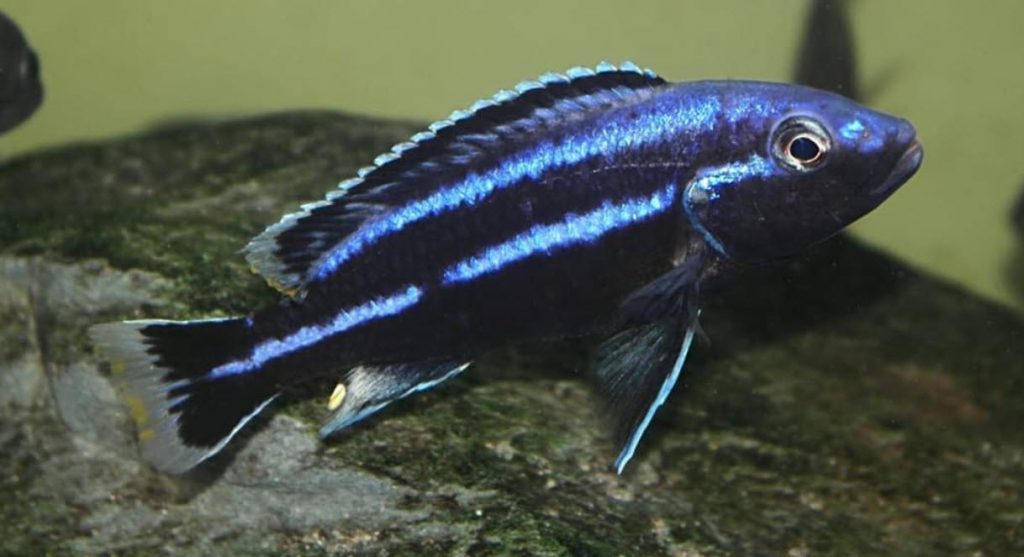
Level #1, Simple Fish in Cycling
The simple way to do fish-in cycling is to simply only feed the fish the amount of one eyeball pelleted food every two days for two weeks, then up the food level to one eyeball a day for two weeks. Then up the feeding to a level of two eyeballs per day of pelleted food. If you have six fish that will be the amount of dry fish food equal to the volume of their twelve eyes combined, pelleted food.
.
Do not feed more than the fish can consume in one minute once per day.
.
Do not change out the water, even if it gets cloudy. Do nothing other than light feeding. And in six to eight weeks your aquarium will be “cycled”. Easy! Just be sure not to clean or change out the filters unless they plug up (the brown gunk is the beneficial bacteria) and the fish will be fine.
This is what we did fifty years ago and it worked just fine. This simplicity is why experts like Cory of Aquarium Co-op recommend this way of cycling.
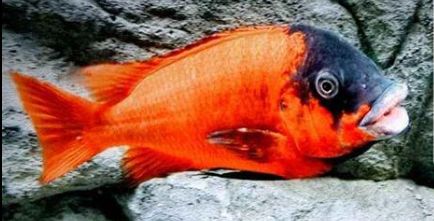
Level #2, Complex Fish-in Cycling
To maximize the safety factor for the fish used in fish-in cycling one needs to get pretty complex. Again, we do not recommend this method. But if one has a tank with fish in it and one wants to be as safe as possible when doing the fish-in cycling this method works the best.
The safest way to do fish-in cycling is to buy two different ammonia test kits. First off buy the “Seachem Ammonia Alert”, a test that mounts on the side of the aquarium.
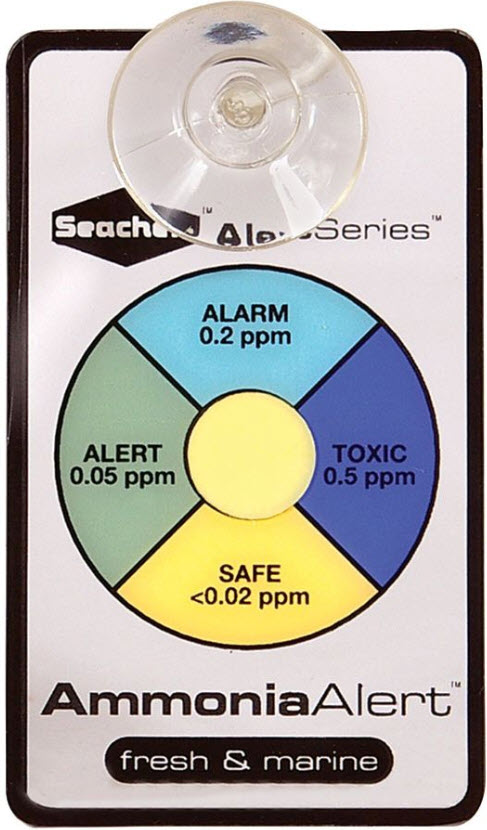
This test measures the free ammonia gas (NH3) that is in the water. This is the poisonous ammonia compound. The goal during fish-in cycling is to keep this color the dull green of the “Alert 0.05 ppm” range. If the color changes to blue (the “Alarm 0.2 ppm”) then a 50% water change needs to be done to protect the fish. If the color stays in the yellow range then the aquarium can take much longer to cycle.
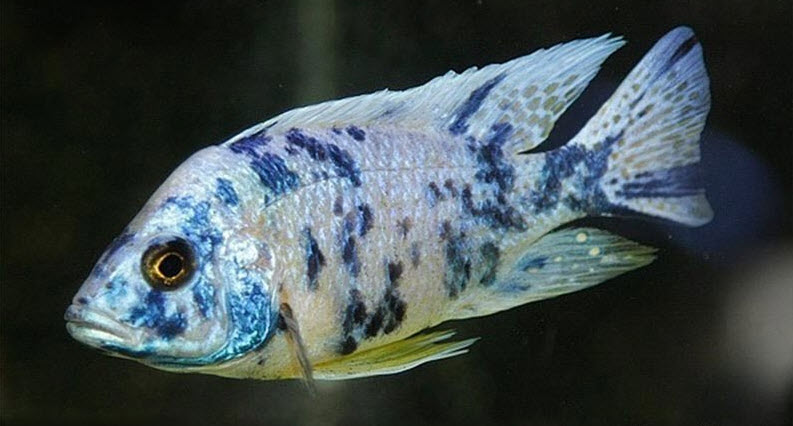
The second test is the “Total Ammonia Test”. This is commonly an API liquid test. It measures largely the relatively harmless ammonium (NH4+) in the water. Using this test kit requires a much deeper approach to the whole set of topics surrounding pH and the ammonia and nitrite levels.
To allow utilization of this test method for fish-in cycling one can go to this link:
2.5.1. Fish-in Cycling Science
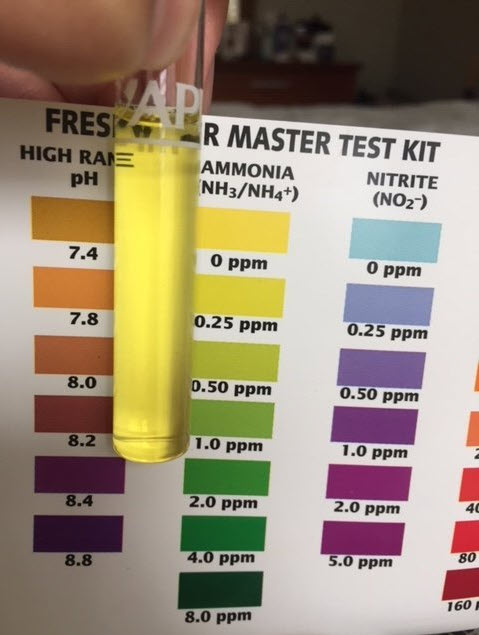
During fish-in cycling, the total ammonia will typically only rise to 0.5 to 1.0 ppm (sometimes the formation of algae short circuits this step and ammonia never rises to more than 0.25). Then nitrite will rise to 1 or 2 ppm (sometimes this doesn’t happen, the cycle commonly skips the nitrite phase). Then the nitrate may rise to 5 to 10 ppm (sometimes there is no nitrate because bacteria, fungi, algae and plants can absorb nitrate and/or the food loading is just inadequate to give any readable nitrates).
Normally hobbyists do water changes to keep nitrate down to 40 or 80 ppm. When the ammonia goes down to 0.25 or less and the nitrite (if there is any) has hit zero, the tank is considered “cycled”. But note that I’ve had months old tanks that have never registered ANY ammonia, nitrite or nitrate because of a complex phenomenon called assimilatory denitrification. So don’t obsess over the test results. They are taken mainly to prevent damage to the fish from too high of ammonia or nitrites.
Many people are quite “successful” putting fish in the tank and doing a “fish-in” cycle. Fish poop sometimes has some amounts of beneficial bacteria in it and can “cycle” a tank in as little as fourteen days. But most of the fish-in cycles I did “way back when” took four to six weeks to “cycle”.
The problem with this “fish-in” cycling is the definition of cycling. Many consider cycling “done” when there is no longer any ammonia in the water of a fish-in cycled aquarium. Since a few fish only put out tiny amounts of ammonia this can happen quite rapidly. But “way back when” I considered an aquarium cycled when the water cleared. And clear water takes much longer. I recommend that anyone doing fish-in cycling define the cycle as complete when the water clears.
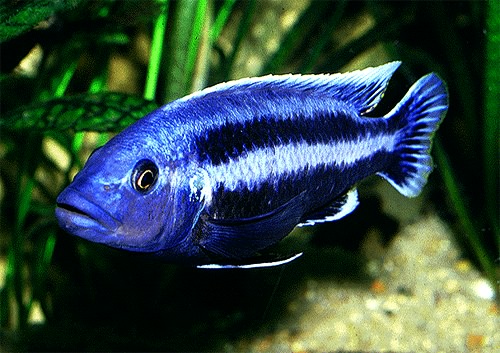
Pointers to doing Any Cycling
“Cycling” is the cultivation of colonies of very slow-growing bacteria which convert semi-poisonous fish pee (ammonia) to a non-poisonous compound (nitrate). These colonies grow on the surface of the media in the filter. The following is what one needs to do when you have fish in an aquarium being started and being cycled:
- Simply turn on the filter and leave it on. Do not clean the filter or change the cartridge and/or the filter media until the filter plugs or falls apart. Changing cartridges or media in a filter is just a big money-making scheme for filter manufacturers. The beneficial bacteria colonies which are grown by the cycling process over weeks reside in the filter cartridge or the filter media. If you change or thoroughly clean the cartridge or filter media once a month you restart the whole cycling process.
- First and foremost measure the acidity of the water. This is called the “pH”. It can be measured with a test kit. If the pH is less than 6.5 in water that has been aerated for at least one day, you need to bring it up to 7.5. This is because beneficial bacteria don’t work at less than 6.5 pH. This requirement was confirmed by testing. The processes needed to raise pH are explained in this link:
4.4.5. Raising pH
- If the pH is greater than 8.5 in water that has been being aerated for at least one day, it needs to be brought down with acid. This is because above 8.6 the ammonia fish produce is somewhat more poisonous. Anything greater than 2 ammonia is poisonous to fish at greater than 8.5 pH. In addition, the beneficial bacteria slow down above 8.6 pH. Lowering pH is covered in this link:
4.4.4. Lowering pH
.
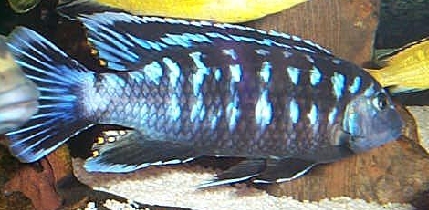
- Try and get some “gunk” (brown biomedia) from an established aquarium filter to “seed” the new filter. One can also use the soil around potted plants from the LFS or black garden soil from the garden as “seeds” of beneficial bacteria. Note commercial soil mixes from the garden store do NOT work because they are sterilized. Compost is often enriched with large amounts of ammonia so this cannot be used with fish in the tank.
- Just wash and squeeze the filter media, soil, or compost into the water in the new tank. Then throw the inoculate into the water. The water will cloud up but it will clear in a few days. Click the following for more information:
2.11. Inoculate for Cycling
- Don’t buy “instant start” bacteria in a bottle like Seachem Stability. The common “bacteria-in-a-bottle” were tested and none of them worked. Hit the following link for more information:
2.8. Bacteria-in-a-bottle
- Don’t add any commercial chemical products. The “ammonia detoxifying” chemicals that supposedly let one instantly cycle a tank, such as Prime, Safe, and Amquel, are also a big scam and don’t work. Testing showed that the combination of Stability and Prime recommended by Seachem made cycling take an average of 15 days longer. Prime is a reducing agent and ammonia is oxidized by beneficial bacteria. Reduction is the opposite of oxidation. So Prime interferes with the beneficial bacteria. Hit the following link for more information:
2.9. “Instant Cycling” Chemicals
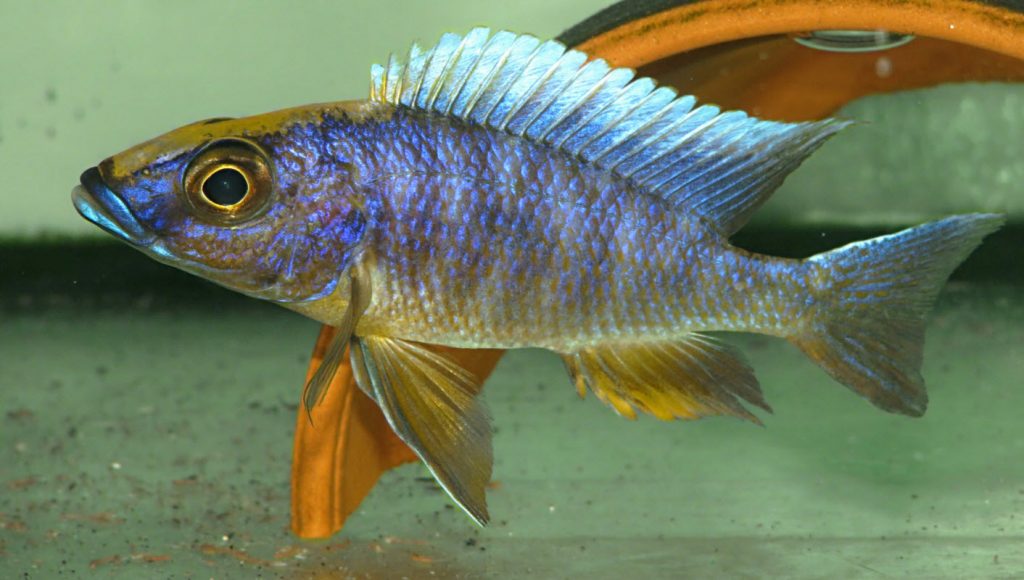
- Add as much aeration (either wavemaker creating choppy waves at the surface or multiple air stones) as possible. Beneficial bacteria require lots of oxygen.
- Feed the fish one eyeball of dry commercial fish food every other day for two weeks. Then do one eyeball every day for two weeks. Then go to two eyeballs per day as the permanent level of feeding (double this for juveniles).
- Plants remove ammonia, nitrite, and nitrate from the water. Since ammonia and nitrite are required during cycling to feed the beneficial bacterial growth, adding plants to the aquarium during cycling will prevent the tank from cycling.
- Add one tablespoon of table salt or aquarium salt for every 10 gallons of water to reduce nitrite toxicity. Only do this once or if you do a water change.
- If the pH is less than 7.4 to 7.6 pH add small amounts of baking soda (sodium bicarbonate) over a span of days to bring the pH up to 7.4. This helps the cycling process. Typically the baking soda is added continually to keep the pH above 7.4 but less than 8.0.
This is not a critical process. You do not HAVE to do ANY of these things. These things will just give the fish the best chance to survive with no long-term damage.
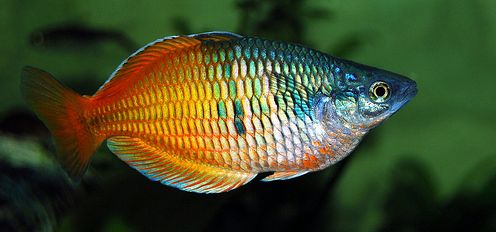
The Biggest Error in Fish-in Cycling
While doing this process one must not panic when the ammonia or nitrite goes to 0.5, 1, or even 2 ppm and do water changes (see the chart above). Beneficial bacteria colonies need ammonia and nitrite as their food source. If you do water changes there will be little growth of the beneficial bacteria colonies and the aquarium will take a very long time to become cycled.
But ammonia levels over 4 ppm with food as the source of the ammonia can get one in trouble. This is not because of ammonia. Rather it is the bacteria that are feeding on the food and feces in the water column. These bacteria are very bad for the fish and can cause diseases to pop up. So we recommend 50% water changes when the API ammonia test hits 4.0 with fish-in cycling, regardless of pH.
Just keep going with no water changes unless gaseous ammonia (Seachem Alert test) hits 0.2 ppm, ammonia and ammonium (API test) hit 4, or nitrite hits 2 ppm (at 7.6 pH). Remember, cycling requires three things:
.
Patience, Patience, and Patience.
.
Note that if one has feeder goldfish, “fair prize goldfish”, common goldfish, or comet goldfish and is doing fish-in cycling the levels of ammonia and nitrite which can be safely breached are very high. That is because the goldfish has been raised in small earthenware basins and ceramic bowls for close to one thousand years in China. And these Chinese had no idea what cycling or the nitrogen cycle is. So “unintentional genetic selection” has taken place and these fish are amazing as to the levels of contamination they will thrive in.
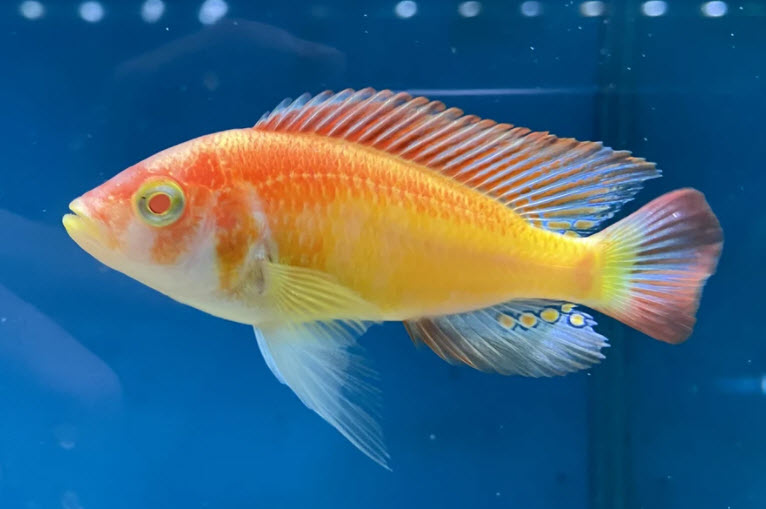
Also, note it is common for the water to become cloudy or even green. Don’t panic when this happens. It TYPICALLY won’t hurt the fish. The cloudiness or green color will clear in a few weeks and the fish will survive just fine the vast majority of the time. Note that if you start changing the water with cloudy or green water you will just make things worse, and the cloudiness can persist for months. Remember, cycling requires three things: patience, patience, and patience.
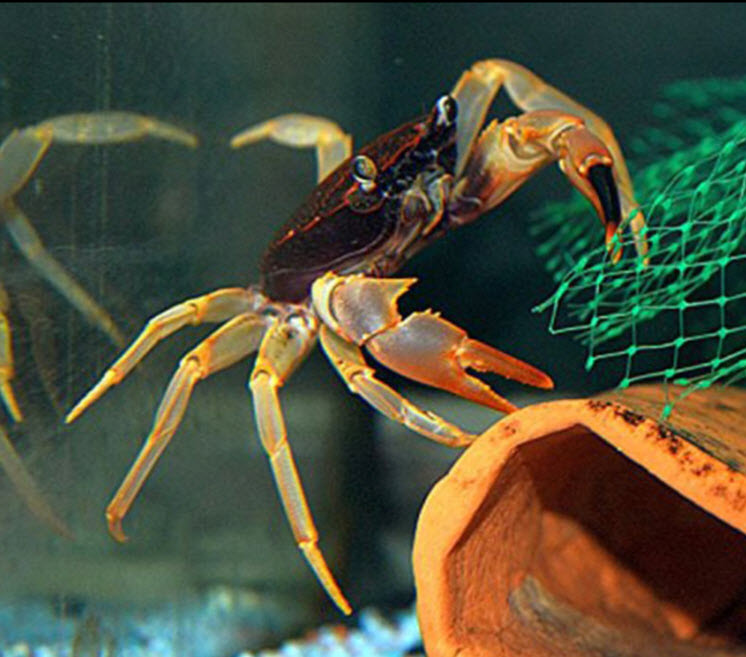
Deliberate Fish-in Cycling with Cheap Fish
This topic is bound to raise huge howls of protest from the PETA “save the fish” group. But using cheap feeder fish to set up an aquarium is perfectly acceptable. Feeder goldfish are especially useful for this process as they have been “inadvertently selectively bred” to take huge amounts of waste in the water with no effect.
If I were to do feeder fish fish-in cycling I would add one feeder goldfish per twenty gallons and feed them for one week three times a day an amount they can eat in five minutes (that is a LOT of food!). After the first week, I would add one more feeder goldfish per twenty gallons. After the second week, I would add one more feeder goldfish per twenty gallons.
Then, after six weeks of NO water changes and NO cleaning of anything, I would transfer the feeder goldfish to a pond and let the tank just run for two weeks. These two weeks of running without fish are to allow the levels of any fish pathogens to drop to negligible/non-pathogenic levels. That is, if the goldfish were asymptomatic carriers of something, after 2 weeks without a host, a pathogen would most likely fall to levels that normally a fish’s immune system would shrug off. In addition, these two weeks just let things “settle out” and for all the beneficial organisms in the brown gunk to reach healthy populations. The more “mature” an aquarium is the healthier the fish and the fewer problems one sees. Note this is not “necessary” in any way, shape, or means.
This will give you a very mature, well-cycled 20-gallon tank capable of handling any amount of fish you want to put in it. If the tank is say 75 gallons I would add four feeder goldfish initially and two feeder goldfish every week for two weeks. That being said this is NOT how I cycle a tank. I use the “How I Cycle” method of fishless cycling with ammonia and food
2.3. How I Cycle
.
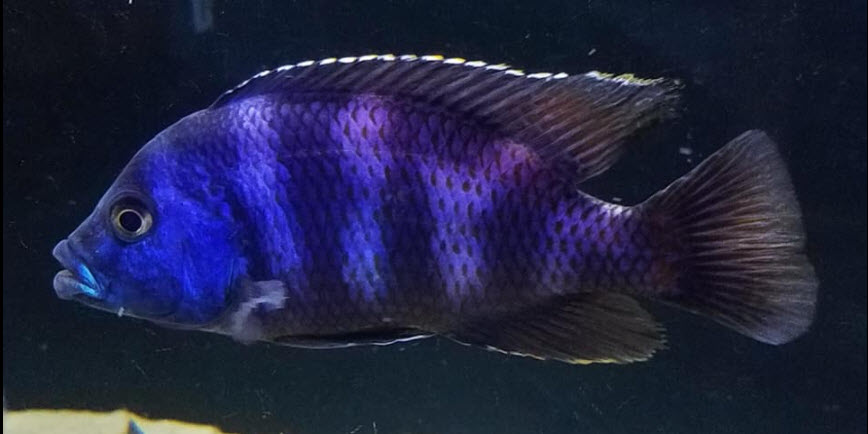
Fish-in Cycling Science
For an even more in-depth analysis of fish-in cycling one can go to this link:
2.5.1. Fish-in Cycling Science
Fast Fish-in Cycling
One problem many get into is how to reasonably make a fish-in cycle work to add a decent number of fish in three to six weeks. If one does fish-in cycling properly, you only lightly feed a small number of fish. So how does one get up to a decent number of fish in less than four to six months? Several commentators on this website have asked this very question. So I’ve come up with “milk jug sponge filter cycling”. This is gone into in this link:
2.5.2. Rapid Fish-in Cycling
Belief Perseverance Effect
Now there is a psychological phenomenon called the “belief perseverance effect” which is very strong. “Belief perseverance effect,” says that if someone believes that small amounts of ammonia can kill fish overnight and fish-in cycling is cruel to fish, they will rationalize and support that belief no matter what. There is no way any amount of logic can penetrate the brick walls that the belief perseverance effect puts up in the mind. So we won’t try.
.
“Nothing dies harder than a lie that people want to believe” Calvin
.
Return to Cycling Menu
.
Aquarium Science Website
The chapters showed below or on the right side in maroon lead to close to 400 articles on all aspects of keeping a freshwater aquarium. These articles have NO links to profit-making sites and are thus unbiased in their recommendations, unlike all the for-profit sites you will find with Google. Bookmark and browse!
.
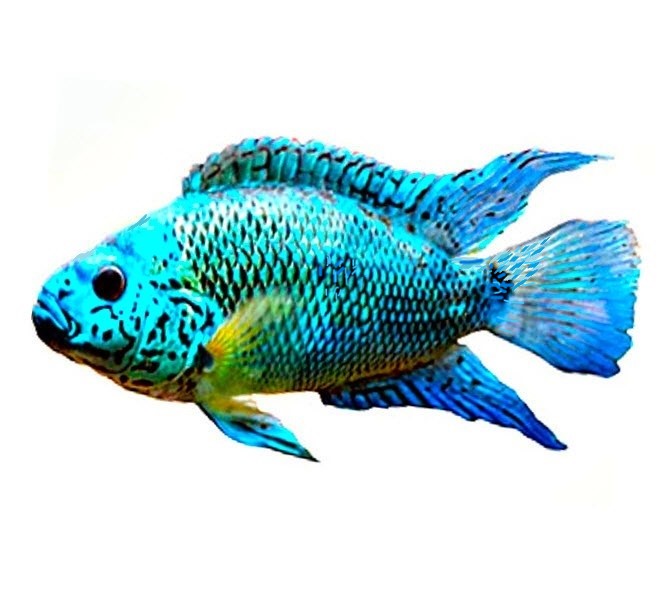
Dave says
In reply to Kira ……. You are probably doing nothing wrong. Cycle the tank without fish. Give it at least four weeks before adding fish. The bettas were probably sick when you got them.
Kira says
Thank you for this helpful guide. Sadly, I had two betta fish die in one week. I started cycling my tank but ended up with a fish-in cycle after a few weeks. I think the first one was sick when I brought it home but the second one was active and eating days 1-2. He later started burying his head in the bottom of the substrate and stopped eating. During this time I was doing partial water changes based on ammonia and nitrite readings from my API master test kit. Also, at one point my heater disconnected and the water dropped to 66* before I realized it, probably 1-2 days. I did a water change with warmer water until the heater got back up to temp.
I have kept other fish alive >7 years and I have seen people keep bettas in a bowl forever with no special equipment. I can’t help but wonder what I am doing wrong. Do you think I will be successful with your method of fish-in cycling? I am wondering if all of my preventative tips (water changes) are hurting my poor fish. I am scared to introduce another one in fear of taking another life. They would have been better off in cups at PetsMart than in my tank which is beautifully planted with real plants.
Dave says
In reply to Beth …… Stop doing water changes. You need ammonia to feed the beneficial bacteria. Just feed very lightly without water changes and you will be just fine.
Beth says
I have a 55 gallon freshwater aquarium and it was cycled previously but I made the mistake of when I got a new Fluval 407 canister filter I didn’t keep any of the media from my previous filter so I’m starting all over again with fish in cycling. My pH is 7.6, ammonia fluctuates between 0.25 ppm and .50 ppm, nitrites are 0 and nitrates are 5.0 ppm and water temperature is 80.0 degrees F. I’ve been doing daily or every other day water changes to try to lower the ammonia to 0. Am I on the right track or should I be doing more frequent water changes?
Dave says
In reply to Dawn ….. Relax and just keep reading the first chapter in the website. You sound like you are on the right track with the feeding and lack of cleaning. The “dust” on your leaves is just algae growth. Your fish will browse and eat the algae so leave it be for now. And just leave the plants in place.
Dawn says
Hi,
I have been reading the questions and worries and your answers. Thank you for helping us… I am going from one disaster to another following so many contradictive help articles and YOUTUBE videos. I have an overstocked fish in cycling aquarium due to literally being given goldfish and danios in a plastic box by someone I do not know??? Don’t even ask. And yes I have never panicked so much in my life.
I haven’t touched a testing kit since ;last week as it was making me sick. I have been over feeding by the sounds of it so I will cut it right back.
I have the sludge muck beginning to build in my main filter.
My question is: I have dust on my Anubias leaves – is this decaying poop? Do I remove any waste I see – not much to be seen. I have plants in the aquarium, do I remove them?
I have never been so lost and it is scary.
Emily says
Thank you for the advice Dave!
Emily says
Update…Today the PH is 7.8 Ammonia is closer to 2.0ppm. Nitrite is 0.25ppm Nitrate are still 0. I fed my 3 corys very little this evening. They ate and went back to just laying still on the bottom.
Dave says
In reply to Emily ….. You are on the right track. Simply start today as though it were the first day of a fish in cycle, with very low feeding rates. And of course don’t clean the filter at all
Emily says
Hello, I am new to the hobby and I am afraid I have royally messed the cycling process. I set up my 15 gal fluval flex in late August (had never heard of cycling a tank) I started with fake plant and 1 betta fish. I was doing 50% or more water changes every 2 weeks or so cleaning the filter and decor thoroughly and vacuuming the gravel. I did get an API freshwater test kit before adding 5 peppered corys about 2 months ago. Whenever I saw the ammonia levels above 0ppm I did a water change to help lower the ammonia. It never got below 0.50ppm and still doesn’t. All of my corys died within 2 weeks of each other with the last 2 dying a week ago. The last two I took out of the 15 gallon and put into a quarantine tank they died after being in the separate tank for almost a week. I added 3 leopard corys to the 15 gallon tank with my betta on November 24 2024. Still not knowing about cycling a tank. They have been way more active than the others ever were always swimming together… Until about 2 days ago. They all of a sudden now only move around when I feed them other than that they just lay around separated from each other. They are starting to do the same as my peppered corys did. My betta sadly died a week ago from dropsy. After reading your article I’m not sure where to start with the cycling process. Should I do a major water change and basically start the cycle all over even though I have 3 corys in the tank or just ride it out? I am going to start feeding them way less. I know now I have been way overfeeding them. Today the PH is 7.6, Ammonia is about 1ppm. Nitrate and Nitrate are 0. Water temp 76°F. All artificial plants no live plants. I would really appreciate any advice you have! Thank you so much!
Vicky Overly says
My ammonia was sky high and I did a 50 percent water change and my nitrite and nitrates are sky high now amd my ph is low. What do I do. 30 gallon tank with 2 big goldfish
Dave says
Lindsay …. You should be able to just keep on trucking. If nitrites hit 4 do a fifty percent water change.
Lindsay says
Thanks so much, Dave! I took your advice and am finally seeing 10-20ppm nitrate. However, Nitrite is now spiking at 2.0ppm, pH about 7.4. I added aquarium salt last night when Nitrites were closer to 1.0ppm. Fish are behaving normally. Should I wait a little bit longer, or do I need to lower Nitrites with a water change?
Dave says
In reply to Lindsay ….. You are doing just fine. No need for a water change. Just keep up with very light feeding until the ammonia comes down. Don’t let the begging get to you.
Lindsay says
Hi Dave,
Thanks so much for the information! My son won 2 common goldfish at the fair a few weeks ago. I didn’t know about tank cycling and was changing the water to keep it clean. I read your article about 10 days ago when I had just upgraded them to a 20 gallon tank, so I have been following your advice of no water changes since then. I’m not sure if I need to do a water changes since now. I am having a hard time reading the Ammonia Alert color. It doesn’t exactly look green, but it doesn’t look light blue either. It almost looks like a mix of the green, light blue and dark blue colors. I’m waiting to receive a new one in the mail just in case. I tested the water parameters and they are Ammonia 2.0ppm, Nitrite .25ppm, Nitrate is almost 5.0ppm, and PH is 7.4ish maybe a bit higher. The fish seem fine. Begging for food endlessly. Should I keep going or do a bit of a water change? Thanks so much!
Dave says
In reply to Enrique … Stop trying to correct you mistakes. It only compounds the problem. Stop using the test kit. It will only raise your blood pressure. Fish in cycling Sounds like you need to do something called “fish-in” cycling. Don’t worry. If you just feed very lightly you will be fine. To speed up the cycle add one of the following:
1, brown gunk from an established aquarium filter
2, a teaspoon of black soil from a potted plant in a sock, squeezed frequently (packaged soil from the store is sterilized and thus useless)
Forget the scams of bottled bacteria like Stability (testing showed it does not work) and the chemicals like Prime (Prime ONLY removes chlorine, confirmed by testing).
Only feed an amount equal to the volume of one eyeball per fish (six fish = six fish eyeballs of food) every three days for two weeks, then every two days for three weeks, then every day for three weeks. Then go to two eyeballs per day. The water may turn cloudy. Ignore that. In general, you will not need to do water changes. Easy!
A tablespoon of salt for every ten gallons of water reduces nitrite toxicity (the chloride ions outcompete the nitrite for uptake by the gills of the fish).
Enrique says
I forgot to add although like I said I have high nitrate and nitrite I’m not reading any ammonia for some reason and as for my PH I’m reading at about 7.6 with high alkalinity of about 120 and the water is hard I don’t know a lot about what this means but it doesn’t sound good any advice would be very helpful
Enrique says
Hi I’m currently new to the hobby and put fish in on the first day and kept adding fish over the course of about a week or two in 2 10 gallon tanks then I found out about the nitrogen cycle and freaked out after I tested my water and saw I had very high nitrate and nitrite level although no ammonia and did a bunch of water changes trying to correct this and even changed my filter which I now know was a big mistake anyways now I know I’ve been reading more and I’ve been leaving the tank alone and checking the water to see the progress and I was dosing stability to the tank daily as I was recommended to do but after reading this article now I’m confused again I don’t have a liquid test kit only strips but I’m reading that I have high nitrite and nitrate in both tanks this isn’t very descriptive but the levels are at the dark pink level the first level where it says danger water change in most test strip containers I’m trying to correct my mistakes what would you recommend me to do?
Dave says
In reply to Joseph ….. Just ride it out as long as the pH is lower than 8.2. If the pH is above 8.2 do a 50% water change.
Joseph says
I left a comment earlier, but I’m getting a little more concerned now. My ammonia is up to 4.0 ppm. PH, nitrates, and nitrites are good. The fish have been in for about 2 weeks. The treated water has been in for a month. Should I keep just riding this out? Or do I need to do a water change?
20 Gallon freshwater with small tropical community fish.
Joseph says
This is really helpful. Thank you for writing it.
I’m new to this and have learned that I am fish-in cycling. I am in the process of trying to course correct from mistakes the first week after putting fish in the tank. Apparently, I overfed the fish, which led to old food going bad, growing white/gray fuzz, and floating around the tank. A fish died, and I used a siphon to get the debris out of the tank, which required a 15% water change.
Hoping things were stabilizing with reduced feeding on an every other day schedule, I tested the ammonia today (after learning my and the pet store’s previous water tests did not test ammonia), and it was 1.0 ppm (nitrates and nitrites remain 0, and ph is 7.0). I was very reluctant to change water again based on what I’d read about cycling, and I’m very glad I found your article.
I am not doing a water change and am going to ride it out with your suggested feeding schedule while testing the water regularly.
I would appreciate if you think I should do something different, but otherwise thank you again for this article.
Dave says
In reply to JJ … I would keep him in the one gallon till one can perform a fishless cycle on the ten gallon.
JJ says
This was so helpful! I took in a homeless betta, 1 yr, who is in a barren 1 gal. I set up a planted (Anubis’s, narrow leaf, Ludwigia, red root) 10 gal for him immediately with fluval stratum. Water is pH 7.6+, ammonia is 0.25-0.5, nitrite is around 2-4 ppm, nitrates 20ppm. I only have the API test kit. I kept adding nitrifying bacteria (now I know) to help balance the nitrite levels. And surprise surprise. They aren’t going down.
I want to add the betta but not sure why the nitrate levels are so high. Should I keep him in the 1 gal while it cycles? Or transfer him? Any advice?
Keith says
Just thought I’d comment how this article helped me. I’m in week 3 of a 5.5 gallon betta fish-in cycle and tested the water today and was very pleased. Last water change was 5 days ago and today the results came back 0ppm Ammonia, 0.25 ppm Nitrite and 0ppm Nitrate. I was so pleased to see that nitrites are forming and that the cycle is progressing. I nearly did a water change until I read this articles section about biggest fish-in cycle mistakes (too many water changes). The water looks clear! Everything is moving right along and I’m happy.
Dave says
In reply to Daisy …… No water changes. Just keep on going with VERY LIGHT FEEDING.
Daisy says
Hi! I have found myself trying to cycle a tank with fish. I’m day 3 (of testing) and results are coming back as ammonia 0.2, nitrites 0 and nitrates 2.5. I haven’t done a water change, but worrying that I need too. I’ve been trying to understand everything, but there is so much information and I’m getting a bit lost. Am I going in the right direction? Any help would be appreciated! Thanks.
Dave says
In reply to anonymous …. You are doing just fine. Just put away the test kit and don’t worry about it. Feed very lightly for two weeks, then lightly for two weeks. Just enjoy your fish.
Anonymous says
I am cycling a5 gallon aquarium with a betta fish in it .I’m about 12 days in . I have o.25ppm ammonia my nitrate and nitrite are 0 my ph is at 8 .all tested with the api kit. this is my first experience with fish. something can’t be right I hope you can help worried about my betta fish
Dave says
In reply to Isabelle … Only salt dose once and if you do a water change. Your water parameters are decent so just keep on going with low feeding.
Isabelle J says
Hello! I ended up with a fish-in cycle against my wish.. My ph is 7.6, ammonia 1, nitrite 1.5 and nitrate 30.
I dosed with salt last night to help. How often can I do it? I’m scared for my fish
Dave says
In reply to Rob …. You are doing just fine. Just keep doing what you are doing and the nitrites should go to zero in a few weeks.
Rob says
Hi!
Thanks for the great info! It’s easy to follow and has been a huge help after I accidentally ended up in a fish in cycle. I’m about 2 weeks in. Ammonia had hovered around 1-2ppm and it has finally dropped to .25ppm so I think I’m making progress. But my nitrites are making me nervous. They are hovering around 2ppm and nitrates are around 20-30ppm. I have salted the tank and I’m trying to resist water changes but don’t want to kill my fish. Is this par for the course or am I doing something wrong? Thanks for the help! (ph is 7.6 and water temp is 80f)